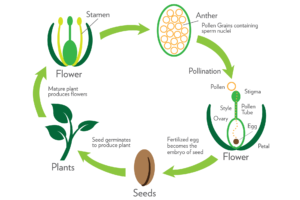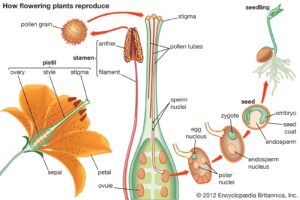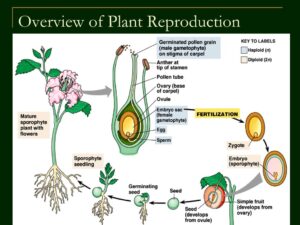Back to: Basic Technology Primary 3
Welcome to class!
In today’s class, we’re going to explore a fascinating aspect of plant life: reproduction. Just like animals, plants have their own unique ways of creating new plant life. Are you ready to uncover the secrets of how plants reproduce and grow their families?
Ways Plants Reproduce

Plants have a variety of methods for reproduction:
Seeds: Most plants reproduce by making seeds. A flower is often involved in this process. The flower’s petals attract pollinators like bees and butterflies. When they visit the flower for nectar, they transfer pollen from one flower to another. This fertilizes the flower, and it develops into a fruit containing seeds.

Spores: Some plants, like ferns and mosses, produce tiny reproductive structures called spores. These spores are released into the air and can grow into new plants under the right conditions.
Runners: Plants like strawberries send out long stems called runners. These runners grow horizontally and produce new plants where they touch the ground.
Bulbs: Plants like tulips and daffodils reproduce by growing bulbs underground. These bulbs can split into new bulbs, each capable of growing into a new plant.

Cuttings: Gardeners can take cuttings from certain plants, like roses or mint, and root them in soil to grow new plants. This is a method humans use to help plants reproduce.
Offsets: Some plants, like aloe vera, produce small offsets or pups around the base of the parent plant. These can be separated and grown into new plants.
Today, we’ve learned that plants reproduce in various ways, from seeds and spores to runners, bulbs, cuttings, and offsets. Each method has its unique way of creating new plant life.
Classwork
Find a flowering plant in your garden or a nearby park. Observe the flower closely and look for signs of pollinators like bees or butterflies. If you can, watch as the flower develops into a fruit or seed. Share your observations with the class!
Evaluation
Why do you think it’s important for plants to have different ways of reproducing? How does this diversity help plants survive and thrive? Share your thoughts with me in our next class!
We have come to the end of today’s class. I hope you enjoyed the class!
In the next class, we shall be discussing Animal and it’s features.
In case you require further assistance or have any questions, feel free to ask in the comment section below, and trust us to respond as soon as possible. Cheers!
